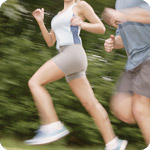www.Lommell.com

|
www.Lommell.com |
 |
| Feel Better . . . Live Better | |
| Orthotic FAQ |
|
Inside Spinal Pelvic Stabilizer Testimonials Frequently Asked Questions (FAQs)
A. Foot Levelers, Inc. is the name of a company that creates custom made Spinal Pelvic Stabilizers, Sandalthotics® and Shoethotics® which are scientifically designed for the individual's unique postural problems. A Spinal Pelvic Stabilizer is inserted into a shoe or boot. A Sandalthotic is a sandal with a custom-made orthotic built right in. A Shoethotic is a custom-made orthotic and shoe combination. Their products are called "spinal pelvic stabilizers" because that's what they do— help stabilize the spine and pelvic area by balancing the feet. We make many different styles of stabilizers, each of which is distinguished by its unique features. Ask your healthcare professional which Stabilizer is right for you. Q. I'm not a doctor. Can I buy orthotics directly from Foot Levelers? A. Foot Levelers only sells their products directly and exclusively to licensed health professionals. Their products are designed to work with the treatments/instruction provided by health professionals. Q. I'm not a doctor. Can I call Foot Levelers and discuss my condition? A. When your personal health is involved, nothing can or should take the place of a consultation with a licensed healthcare professional. Any questions you have about your health should be directed to your doctor or other health professional. Q. Should I take my stabilizers along when I buy new shoes? A. Yes, if the shoes are appropriate for that style of stabilizer. Foot Levelers are most effective when used in shoes with good construction, fit, and condition. Your stabilizers are also a guide in assuring new shoes fit well. If a shoe can't accommodate a stabilizer which has been custom made for your foot, then that shoe is not the proper size for you. Q. Do my stabilizers require special care? A. Your stabilizers represent an investment in your good health, and should be treated accordingly. It is advisable to remove them from your shoes at night, especially if your feet perspire excessively, or if your footwear gets wet. Let them and your shoes dry completely before wearing them again. Surface dirt can be removed with a damp cloth as needed. Make sure to dry the surface thoroughly, even on moisture-resistant styles. Dot fasteners, especially, must be kept free of dirt and debris for maximum effectiveness. Q. How long can I expect to wear my Foot Levelers? A. Like wearing eyeglasses, once a need for orthotic support is recognized, most people continue to benefit from wearing stabilizers. Also, your specific prescription for glasses may change to reflect the way your body changes over time. For this same reason, we recommend an annual re exam to confirm that your Foot Levelers are still providing the best support for you. Q. What should I do if the stabilizers hurt my feet? A. Some people experience a mild discomfort during initial break-in. Break-in time can take up to two weeks in some cases, but usually much less time for most people. If your feet are uncomfortable, remove the orthotics for about half an hour, then re-insert. The golf ball exercise is a simple way to speed the adaptation process. Sit with a golf ball under your bare foot. Roll the ball with as much pressure as is comfortable from the front of your foot to the back, and along the arches and outer edges. Do this for up to five minutes per foot, twice a day, to speed adaptation. If discomfort persists beyond two weeks, call the health care professional who prescribed your orthotics. Q. Is my stabilizer too wide? It's a snug fit going into my shoe. A. For a couple of days, new stabilizers may exhibit some resistance on placement and removal. With use, they take on a slightly concave shape and mold to the shoes. After several days they can be easily slipped in and out of the shoes. Q. How can a problem in my feet contribute to pain in my neck? A. Your spine is one link in a "chain," with your feet as the base. Lack of stability in the pedal foundation can lead to distortions and a muscular stretching all the way up the spine. With foot pronation and the associated collapse of the arches in one or both of your feet, the base point of your body's center of gravity shifts forward. This causes other parts of your body to try and compensate for this shift. Eventually, the head attempts to maintain its position over the vertical center of gravity, and therefore slides into anterior translation (movement straight forward). This can lead to pain and/or stiffness over time. The body's overall stabilization efficiency is greatly reduced, and it must work harder to maintain a standing posture. Spinal Pelvic Stabilizers work with our chiropractic therapy, treatments, adjustments, etc. to help stabilize your body by getting your feet back into correct position. |
|||
| Feel Better . . . Live Better | |||